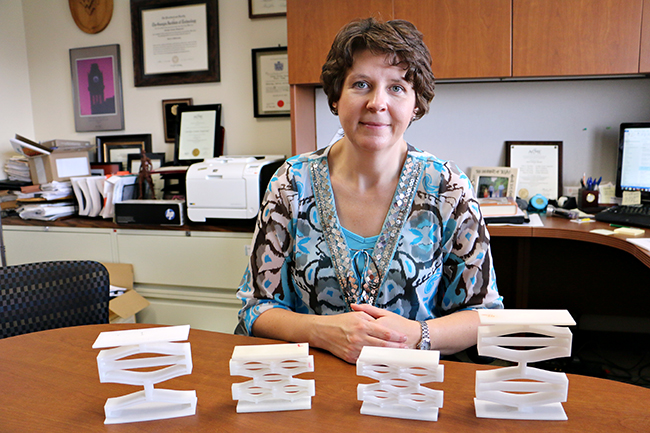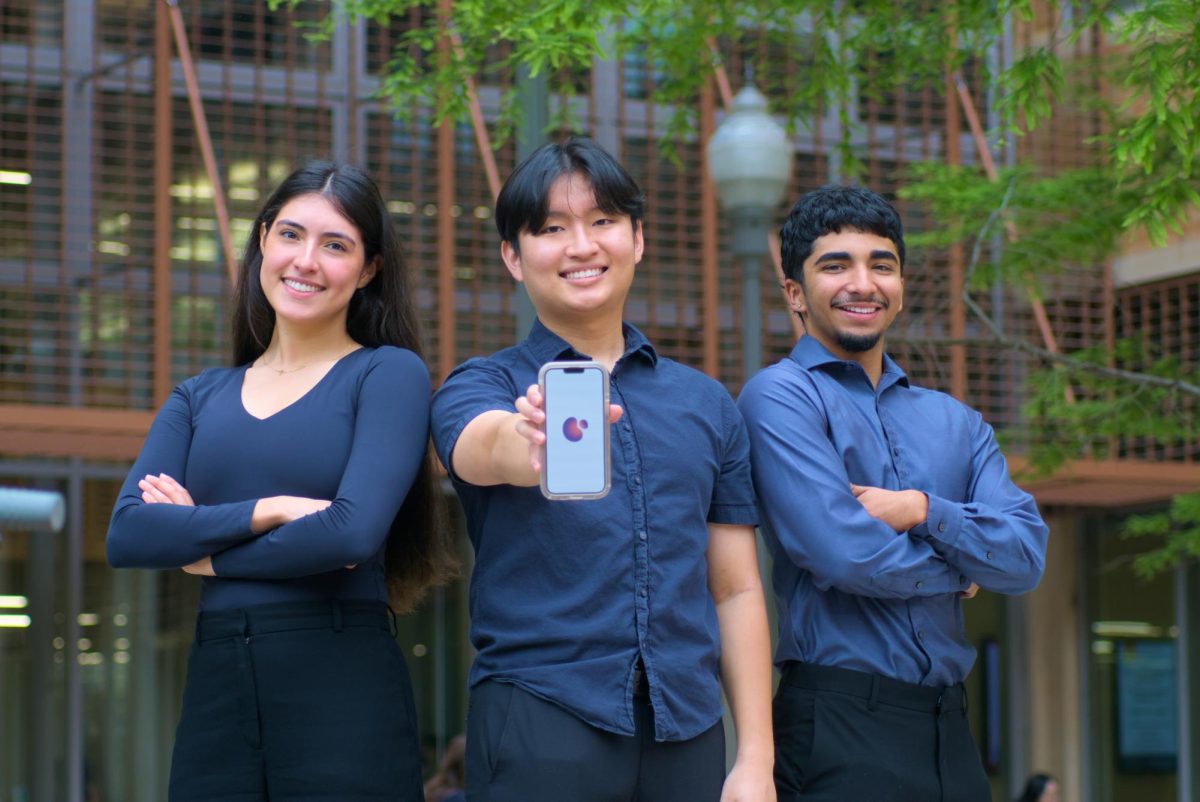The creators of UT’s new shock insulation technology know that when human safety is at stake, every choice counts.
For several years, mechanical engineering professor Carolyn Seepersad, researcher Michael Haberman and their team of graduate students have been working on a new material structure called the negative stiffness honeycomb. The NS honeycombs are versatile impact-absorbing structures that can be modified for use in many different protective products, such as padding in military helmets, bicycle helmets and car bumpers. The design, which can be made with different materials depending on its application, is composed of repeating cell structures with both straight and curved beams.
“The major benefit of the technology is the ability to tailor it to what you want,” Haberman said.
The NS honeycombs can be made to absorb different amounts of impact for various force thresholds. For example, a honeycomb providing insulation in a car bumper would be designed to withstand more force than one in a bicycle helmet. Haberman said this makes NS honeycombs a much more versatile form of shock absorption than other existing technology.
Current impact protection designs include the traditional hexagonal honeycomb structures and foam materials. Traditional honeycombs are used in vehicles such as cars and airplanes and absorb shock proficiently but crush on impact. Foam, which is used in helmets and athletic protection, is more durable but absorbs less shock than honeycombs.
The curved beams of the NS honeycombs snap from one stable state to another, similarly to the way slap bracelets work. This allows the NS honeycomb to absorb a substantial impact, and then bounce back to its original shape. In a press release, Seepersad said the new technology could reduce or prevent many blunt-force injuries.
The NS honeycomb incorporates aspects of positive and negative stiffness. Positive stiffness is the property of a material to resist being deformed by a force. On the other hand, with negative stiffness technology, stored energy inside the material works with the force exerted to help the deformation proceed.
When stabilized with other materials that exhibit positive stiffness, negative stiffness materials have a huge potential for shock absorption and dampening.
Funding for the research came partially from a grant from the U.S. Department of Defense, which was interested in the potential of the NS honeycombs as protection in combat situations.
“Whether you’re serving our country in uniform, playing in a big game or just driving or biking to work, the potential for multiple collisions or impacts over time — however big or small — is a reality,” Seepersad said in a press release.
The NS honeycombs have been featured in magazines such as Popular Science and appeared in a video on the big screen at UT home football games.
Seepersad said the next step is integrating negative stiffness honeycombs into products that are available to the public. He has patented the structures through UT and is currently collaborating with the University Office of Technology Commercialization to reach out to companies that may be interested in licensing the design.
“On the University campus we can only take it so far,” Seepersad said. “We can develop the technology, we can prove the technology, we can show proof of concept for different applications, but then at some point a company has to take it and implement it into one of their products.”





















